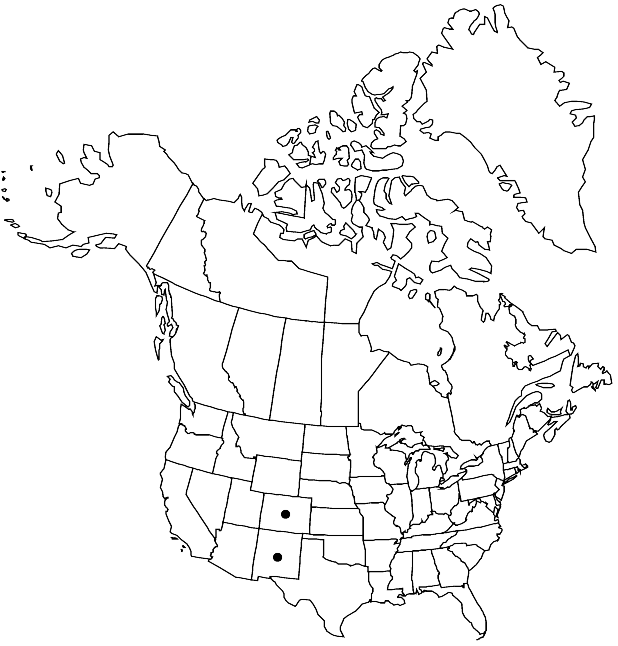Lepidium crenatum
Bull. Torrey Bot. Club 33: 141. 1906.
Perennials or subshrubs; (woody base aboveground); puberulent. Stems simple from base, erect, branched distally, (2–) 3–8 (–11) dm. Basal leaves rosulate (on sterile shoots); petiole (1.5–) 2.5–8 (–10) cm; blade oblanceolate to spatulate, (2–) 3–7 (–9) cm × 5–23 (–32) mm, margins crenate to serrate-crenate. Cauline leaves shortly petiolate or sessile; blade oblong to oblanceolate, 1–3.5 cm × 4–15 mm, base cuneate, not auriculate, margins entire. Racemes (subcorymbose panicles), slightly elongated in fruit; rachis puberulent, trichomes straight. Fruiting pedicels divaricate-ascending to horizontal, straight, (terete), 3–6 (–8) × 0.2–0.25 mm, puberulent adaxially. Flowers: sepals oblong to ovate, (1–) 1.3–1.8 (–2) × 0.9–1.2 mm; petals white, suborbicular to broadly obovate, (1.8–) 2–3 × 1.3–2 mm, claw 0.5–1 mm; stamens 6; filaments 1.4–1.6 mm, (glabrous); anthers 0.5–0.7 mm. Fruits broadly ovate, (2.5–) 3–3.5 (–4) × (2–) 2.3–2.8 mm, apically winged, apical notch 0.1–0.2mm deep; valves thin, smooth, not veined, glabrous; style 0.2–0.6 mm, exserted beyond apical notch. Seeds ovate, 1.5–2 × 1–1.3 mm.
Phenology: Flowering Jun–Aug.
Habitat: Pinyon-juniper and brush communities, clay bluff of sandstone mesa, arroyo banks
Elevation: 1800-2000 m
Discussion
Of conservation concern.
Lepidium crenatum is known from Delta, Moffatt, Montezuma, and Montrose counties in Colorado. It was reported from Utah by C. L. Hitchcock (1936) and R. C. Rollins (1993), but we have not seen any material to confirm its occurrence there.
Selected References
None.
Lower Taxa
"elongated" is not a number."thick" is not a number."dm" is not declared as a valid unit of measurement for this property."dm" is not declared as a valid unit of measurement for this property.
